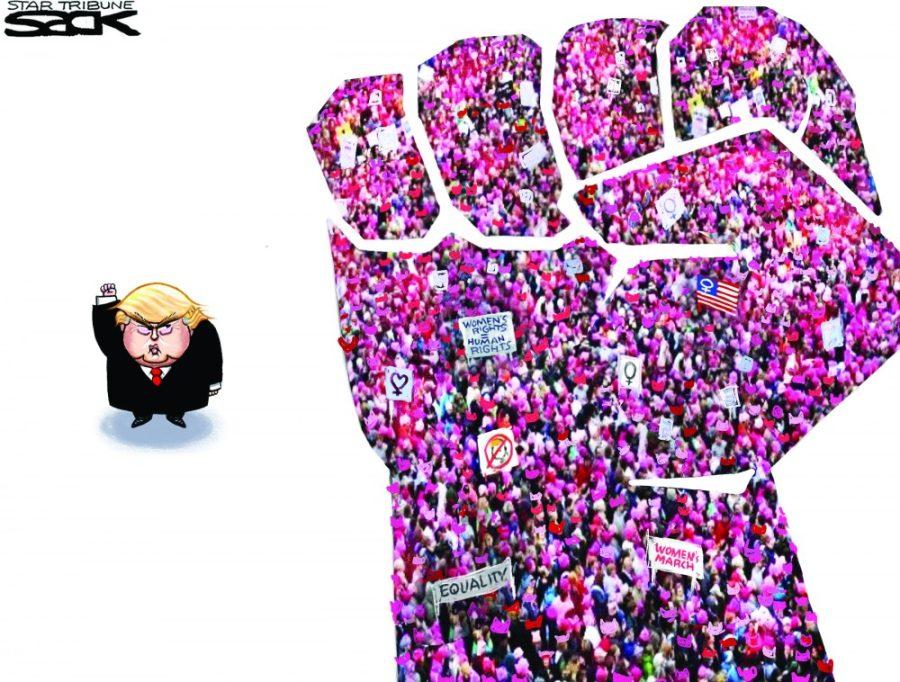The day protests stop is the day that we, as American people, have lost our voice, our desire to progress and our will to fight.
In light of the Women’s March on Washington that occurred across the nation on Saturday, the topic of why people protest is back in the spotlight.
Despite it being labeled as a Women’s March, there were people from all walks of life who were there to stand up for their own personal injustices.
Whether that is gay rights, anti-Islamophobia or feminism, the group gathered to send a message to the new president and many other American citizens who they feel need to be educated on such issues.
Some may say that these groups, specifically women, do not face inequality because they’re legally equal to men, so they’ve no need to protest. Even though women have the same legal rights as men, it doesn’t mean that there’s not subconscious sexism. And how do we as people solve daunting problems like these?
We use numbers.
In order to have your voice heard and your problems talked about, you have to make a scene.
RELATED: Twitter politics weekend recap
Changing subconscious behavior on a large scale can only be done if the issue is being thought about and talked about. Problems like these can’t solve themselves without making the public aware that it’s even an issue.
The fight doesn’t stop here, making a problem known doesn’t solve the problem. There are always the people who still don’t see these issues as issues, usually because this subconscious oppression benefits them in some way. So why change it?
A total evaluation on social issues has a domino effect. It has to start small with a highly courageous and aggressive person or group.
From there, they make themselves known and spread the word to others who could help their cause. Once the group gets big enough, people can begin to exhibit their frustrations in ways that will be noticed. Whether that is filing a lawsuit, boycotting or protesting.
Some say that protesting is a waste of time and it’s just a bunch of people complaining about problems that don’t exist. But to the people protesting, these problems are very real because they often feel the minor to major effects on a daily basis.
Throughout history, this pattern has repeated itself: A group identifies a problem, they make that problem known and the problem becomes less of a problem. Though this makes it sound like the process is simplistic, it’s not.
RELATED: Tucson community turns out to march for women’s rights
Getting people to change the way they think when they don’t recognize the problem isn’t an easy feat. The power of the protest, though it is disruptive in nature, gets the attention that causes need.
People’s subconscious actions can be changed by making them into conscious actions.
Whether people discriminate against certain groups purposefully or without knowing, creating an issue makes them think before they act. Protests act as a teaching tool for the general public. They have to be disruptive in order to get the attention of the people and the media.
So even though the women’s marches may seem pointless to some, I encourage everyone to take a moment to listen to what these people are saying. If you’re not a part of the oppressed group, who are you to say whether what they are protesting is a problem or not?
Take a step back and listen to the people. Give them a chance before you write them off. Protests have been happening for years. Some become violent, others are peaceful, but they all get attention.
That’s all a protest is—the downtrodden letting the rest of the population know that they are there, they’re angry and they’re ready to fight for what they believe in.
Follow Claudia Drace on Twitter.









